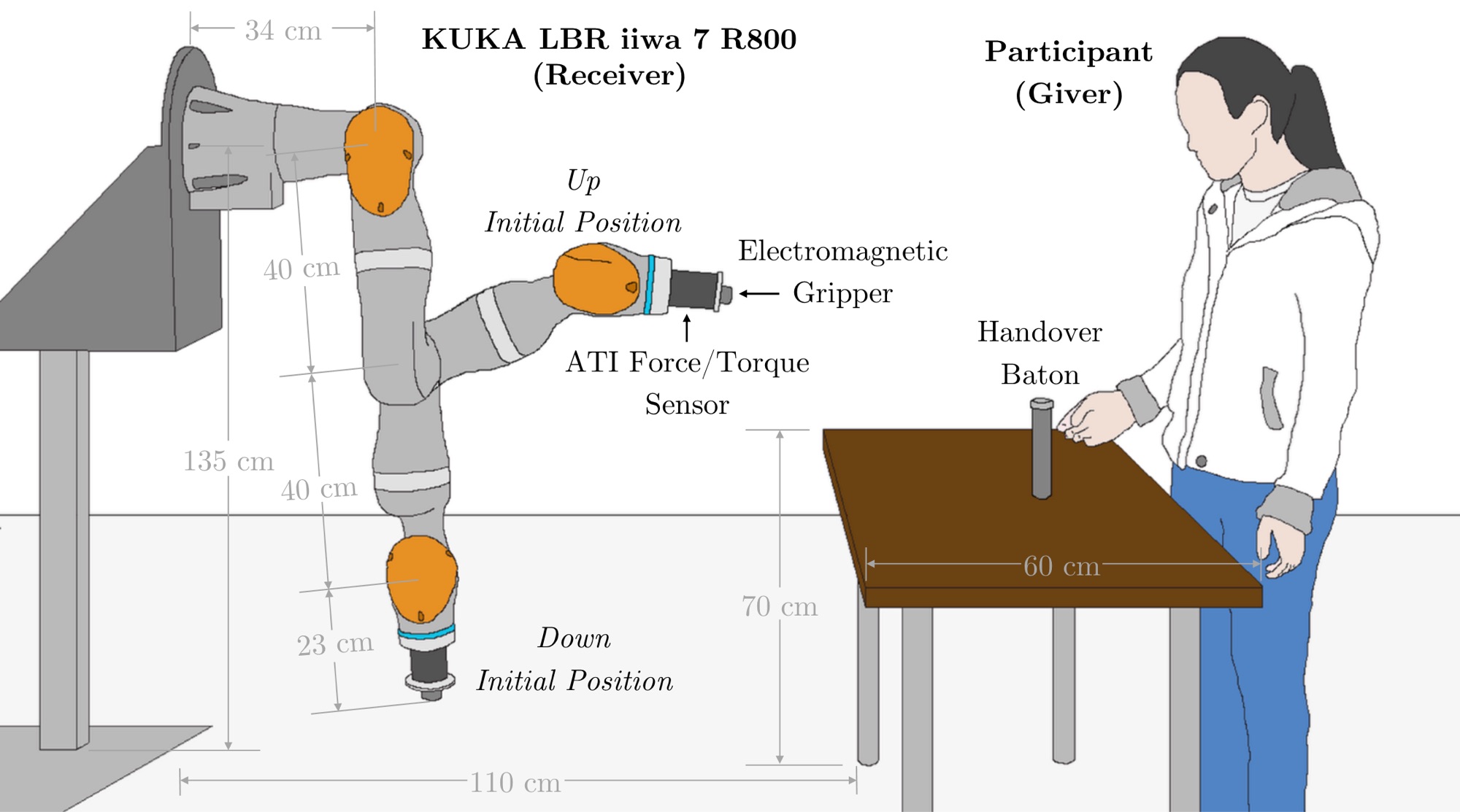Abstract

This work presents an exploratory user study of human-to-robot handovers. In particular, it examines how changes in a robot behavior influence human participation and the overall interaction. With a 2x2x2 experimental design, we vary three basic factors and observe both the interaction position and forces. We find the robot’s initial pose can inform the giver about the upcoming handover geometry and impact fluency and efficiency. Also, we find variations in grasp method and retraction speed induce significantly different interaction forces. This effect may occur by changing the giver’s perception of object safety and hence their release timing. Alternatively, it may stem from unnatural or mismatched robot movements. We determine that making the robot predictable is important: we observe a learning effect with forces declining over repeated trials. Simultaneously, the participants’ self-reported discomfort with the robot decreases and perception of emotional warmth increases. Thus, we posit users are learning to predict the robot, becoming more familiar with its behaviors, and perhaps becoming more trusting of the robot’s ability to safely receive the object. We find these results exciting as we believe a robot can become a trusted partner in collaborative tasks.
Additional Content
Copyright Notice
The documents contained in these directories are included by the contributing authors as a means to ensure timely dissemination of scholarly and technical work on a non-commercial basis. Copyright and all rights therein are maintained by the authors or by other copyright holders, notwithstanding that they have offered their works here electronically. It is understood that all persons copying this information will adhere to the terms and constraints invoked by each author’s copyright. These works may not be reposted without the explicit permission of the copyright holder.